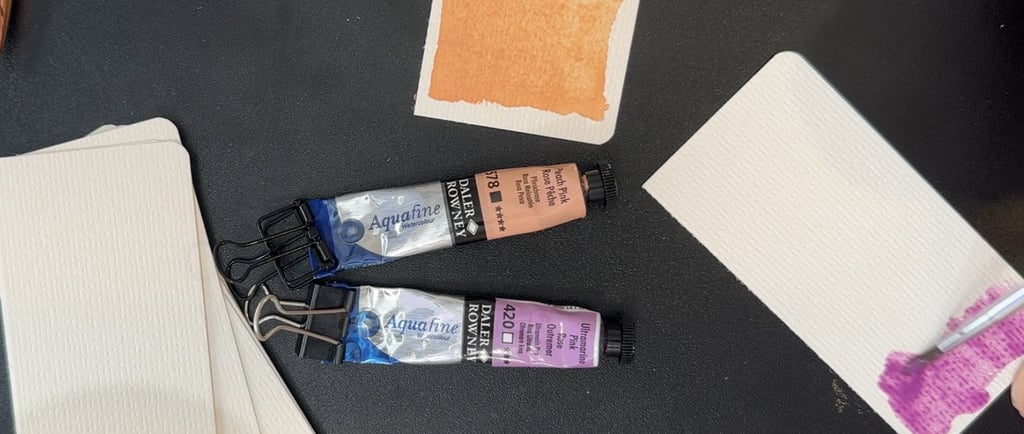Free standard shipping on orders over $49
5 Simple Watercolor Habits That Make a Big Difference
Discover five simple watercolor habits that can transform your paintings. Learn how to control water, choose the right paper, embrace the process, and more.
WATERCOLOR TRICKS & TIPS
9/12/20253 min read


Starting out in watercolor painting can feel intimidating. If you’ve ever tried it, you might have experienced paper buckles, the colors spreading unpredictably, and finding that what’s in your head doesn’t make it onto the page. But here’s the good news: small shifts in how you approach your practice can change everything.
Whether you’re brand new to watercolor or looking to improve your results, here are five simple habits that can help you paint with more confidence and joy.
1. Start Small
Big blank sheets of watercolor paper can feel overwhelming. Instead, cut your paper into smaller sections or use postcard-sized sheets. Mini paintings give you space to practice techniques without the pressure of filling an entire page.
And don’t worry, the skills you develop on small paintings will translate to larger pages. Plus, small artworks are easy to frame, gift, or even mail to a friend.
2. Play With Water
The first part of watercolor is water. Learning to control the water is the biggest part of the battle, and fortunately, it gets easier the more you do it. Starting out, you can try this simple exercise to begin understanding how your brush holds water: load your brush with plenty of water and just a small touch of pigment, then paint a small square on your paper.
Next, rinse your brush, pick up a little more pigment, and try again, painting another square with less water. Repeat this across the page until you’re dipping straight into the paint pallet without adding any water.
You’ll see how transparency, flow, and saturation shift with even tiny changes. This habit builds intuition, and you’ll quickly learn how wet or dry your brush needs to be for the effect you want.
3. Let Layers Dry
It’s tempting to keep fussing with your painting, but overworking can lead to muddy colors and damaged paper. Instead, paint one layer, set it aside, and let it dry completely before adding more. Alternatively, if you’re not a patient person, you can use a hair dryer or a heat gun to dry the page between layers.
Not only will this improve the look of your work, but it will also give you time to step back and decide what your painting really needs next.
4. Choose the Right Paper
If you splurge on just one supply, let it be watercolor paper. Printer paper simply won’t work. It buckles, tears, and can’t hold pigment. And cheap watercolor paper that’s made from synthetic fibers won’t hold water and pigment the way good watercolor paper does.
Even budget 100% cotton watercolor paper makes a huge difference in how your washes look and how easily colors blend. Try a brand like Academy, Bee paper, or Meeden’s 100% cotton paper. You will pay a little more for all cotton paper, but trust me when I tell you it’s worth it.
Good paper lets the water and pigment do their magic.
5. Embrace the Process
Every brushstroke is practice, and you should practice every day if you can. Some days your paintings will turn out beautifully; other days they won’t.
That’s okay. Watercolor is about movement, play, and discovery. So, have fun with your practice. Paint the things you want to paint, try them in different ways or non-traditional colors. Just play, and the learning will happen naturally.
Keep Painting, Keep Growing
These habits might feel simple, but in practice, they build the foundation of your watercolor journey. Start small, experiment, and play with the water and the pigments. Take your time and give your layers time, invest in decent paper, and have fun.
Every painting, even the messy ones, moves you closer to where you want to be. And you might as well have a good time on that journey.